Enhanced Collaboration in Post-Secondary Institutions
LEVERAGING DATA INTEGRATIONIn today’s data-driven world, educational institutions are recognizing the immense value of utilizing data to improve decision-making, drive innovation, and enhance student experiences. This is equally relevant for post-secondary continued education departments, which can greatly benefit from leveraging data from other areas within the university. By implementing a robust data warehouse solution, such as Snowflake, and integrating it with powerful data integration tools like Talend and Qlik, post-secondary continued education departments can unlock the full potential of data collaboration and make data-driven decisions that lead to improved outcomes.
The Power of Data Collaboration
Post-secondary institutions possess a vast amount of data across various departments and systems. By breaking down data silos and fostering collaboration, continued education departments can tap into this valuable resource and gain insights that drive strategic initiatives. Here are some key areas where data from other university areas can be leveraged:
Enrollment and Admissions: By analyzing enrollment patterns, demographic data, and application trends from the admissions department, continued education departments can identify high-demand courses and target specific student populations for outreach and recruitment efforts.
Student Performance and Engagement: Accessing data related to student grades, attendance, and engagement from academic departments allows continued education departments to understand student success factors, optimize curriculum offerings, and personalize learning experiences for improved outcomes.
Alumni and Career Services: Collaborating with the alumni and career services department provides continued education departments with insights into post-graduation outcomes, alumni engagement, and industry trends. This information can be utilized to align course offerings with emerging job market needs and enhance networking
A pain point for post secondary institutions pain point is how to track their alumni. The answer can be found within data in another area of the organization. Something simple – when a former student requests transcripts from the university they provide their updated contact information which doesn’t always make its way to the continuing education department or the alumni looking for donors.
The Role of a Data Warehouse
A data warehouse acts as a central repository for storing, organizing, and analyzing large volumes of structured and unstructured data. Snowflake, a popular cloud-based data warehouse, offers several advantages for post-secondary continued education departments:
Scalability and Performance: Snowflake’s architecture enables effortless scalability, allowing continued education departments to handle increasing volumes of data without compromising performance. This ensures fast and reliable access to critical information.
Data Security and Governance: Snowflake incorporates robust security measures, including encryption, access controls, and auditing capabilities, to safeguard sensitive data. Compliance with data protection regulations, such as GDPR and CCPA, is facilitated through Snowflake’s advanced security features.
Collaborative Data Sharing: Snowflake simplifies data sharing between different university departments and external partners. Continued education departments can securely share specific datasets with authorized stakeholders, fostering collaboration and facilitating data-driven decision-making across the institution.
Enhancing Snowflake Functionality with Talend and Qlik
To leverage the full potential of Snowflake, continued education departments can integrate it with data integration and visualization tools like Talend and Qlik. Here’s how these tools can enhance functionality:
Talend: Talend provides powerful data integration capabilities, enabling continued education departments to extract, transform, and load data from various sources into Snowflake. Its intuitive interface and vast library of pre-built connectors simplify data integration workflows, ensuring timely and accurate data ingestion into Snowflake.
Qlik: Qlik’s data visualization and analytics platform complements Snowflake by enabling users to explore and analyze data in a user-friendly manner. Qlik’s intuitive dashboards and visualizations empower continued education departments to derive actionable insights from Snowflake data, enabling informed decision-making.
By combining Snowflake, Talend, and Qlik, continued education departments can establish a seamless data pipeline that ensures accurate and up-to-date data integration, storage, and visualization, enabling stakeholders to make data-driven decisions efficiently.
In the realm of post-secondary continued education, harnessing the power of data collaboration is essential for achieving academic excellence, student success, and operational efficiency. By implementing a data warehouse like Snowflake and integrating it with tools like Talend and Qlik, continued education departments can break down data silos, unlock valuable insights from other university areas, and enable effective data-driven decision-making. Embracing these technologies paves the way for innovation, strategic planning, and improved outcomes in the dynamic landscape of post-secondary continued education. Reach out to us today to find out how we can help you surpass your targets.
